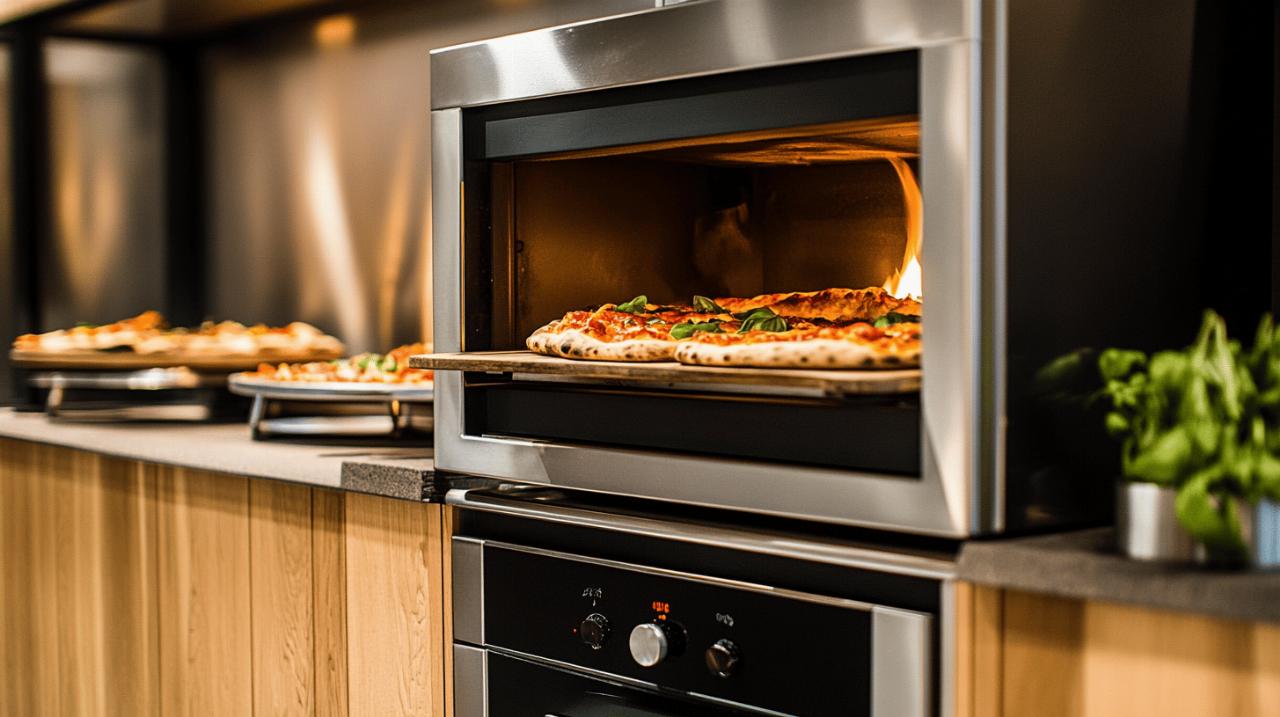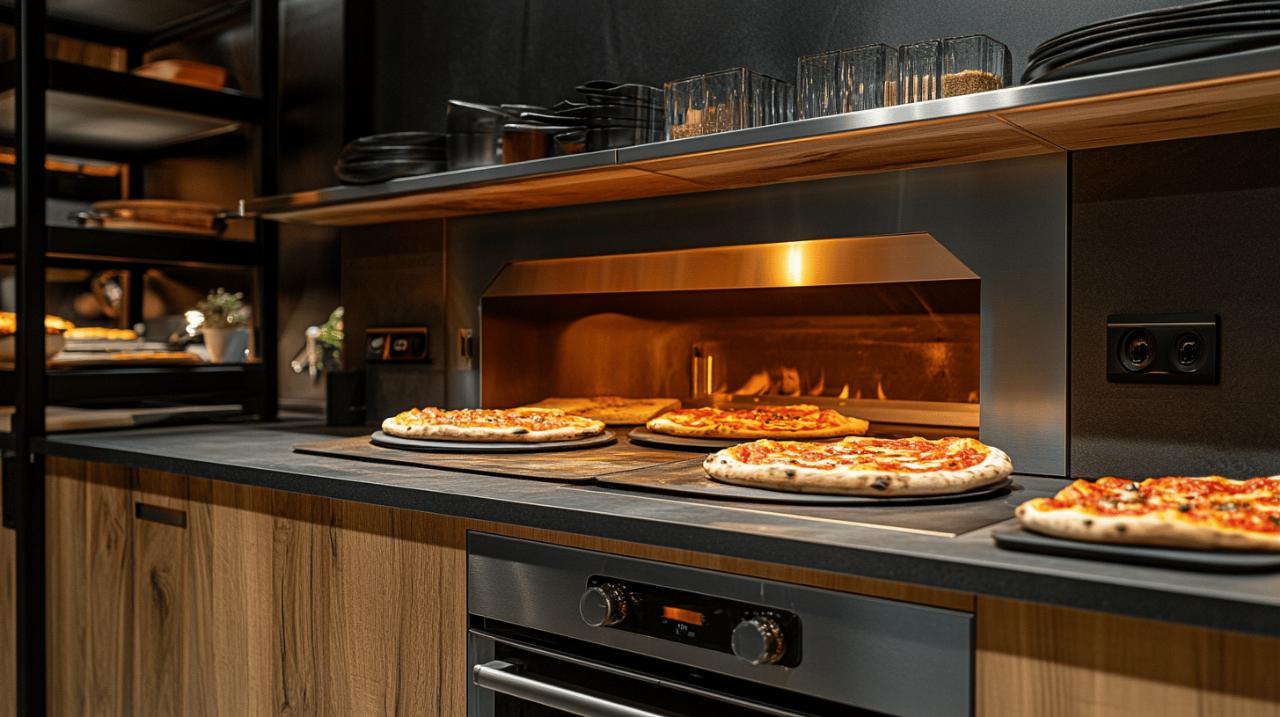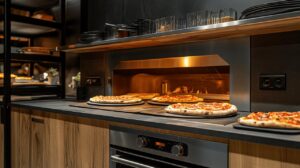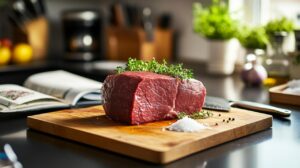Quel four pizza encastrable choisir: Comparing Ventilation Requirements for Indoor vs Outdoor Settings
Understanding the Basics of Built-in Pizza Ovens
When considering a built-in pizza oven for your home, it's essential to understand the fundamentals before making your purchase. These specialised cooking appliances can transform your culinary experience, bringing authentic pizzeria-quality results to your kitchen or garden. Unlike standard ovens, pizza ovens are designed to reach significantly higher temperatures, creating that perfect combination of crispy base and properly cooked toppings that makes homemade pizza so satisfying.
Different fuel types: wood, gas and electric options
Built-in pizza ovens come in three primary fuel variants, each offering distinct advantages. Wood-fired ovens deliver that traditional smoky flavour that pizza enthusiasts crave, imparting a characteristic taste that's difficult to replicate with other methods. However, they require more attention and skill to maintain consistent temperatures. Gas-powered alternatives offer excellent temperature control with minimal fuss, making them a practical choice for regular use. Electric models stand out for their simplicity and convenience, though they might struggle to reach the extreme temperatures achieved by their wood and gas counterparts. Your choice ultimately depends on how you balance authenticity against convenience in your cooking approach.
Temperature Requirements for the Perfect Pizza Crust
The secret to achieving that coveted crispy-yet-chewy pizza crust lies in high-temperature cooking. Professional-quality results typically demand temperatures exceeding 400°C, which allows the dough to cook rapidly, creating those characteristic blistered bubbles and a light, airy texture. Lower temperatures often result in denser, less satisfying crusts. When selecting your built-in oven, verify its maximum temperature capabilities to ensure it can deliver the heat intensity required for authentic pizza preparation. This high-heat cooking method also contributes to shorter cooking times, with many pizzas cooking to perfection in just 90 seconds to two minutes when the oven reaches optimal temperature.
Key considerations for indoor pizza oven installation
Installing a pizza oven indoors requires careful planning beyond simply choosing the model. You'll need to consider how the appliance integrates with your existing kitchen infrastructure, including power supply, gas lines if applicable, and most critically, ventilation systems. Indoor installations must comply with local building codes and safety regulations, which typically include specific requirements for high-temperature cooking appliances.
Space Requirements and Sizing for Your Kitchen
Built-in pizza ovens demand appropriate spatial accommodation, both for the unit itself and the surrounding area. When measuring your available space, account not just for the appliance dimensions but also for clearance requirements specified by manufacturers. These safety margins prevent heat transfer to adjacent surfaces and allow proper airflow around the unit. Consider the depth of your countertops or cabinetry, as pizza ovens often require deeper installation spaces than standard appliances. Some compact models measure approximately 60cm in width, while larger professional-style options can exceed 90cm, requiring substantial kitchen real estate. Remember to factor in front access space for comfortable operation when the oven door is open.
Ventilation needs for indoor pizza ovens
Proper ventilation stands as perhaps the most critical element of indoor pizza oven installation. These specialised appliances generate significant heat, smoke, and cooking vapours that must be efficiently extracted. For wood-fired indoor ovens, a dedicated chimney system is virtually mandatory to safely remove combustion byproducts. Gas models require ventilation that meets specific safety standards to prevent carbon monoxide accumulation. Even electric units benefit from extraction systems to manage moisture and cooking odours. Most indoor installations will necessitate a high-capacity extraction hood positioned directly above the oven, connected to external venting. The extraction system should be rated for high-temperature cooking and provide sufficient air movement to prevent smoke and heat from escaping into your kitchen space.
Outdoor built-in pizza oven specifications
Outdoor built-in pizza ovens offer greater flexibility in terms of installation requirements, particularly regarding ventilation. They provide an excellent solution for homeowners who desire authentic pizza-making capabilities without modifying indoor kitchen infrastructure. These models are specifically engineered to withstand environmental challenges while delivering consistent cooking performance.
Weather-resistant features for outdoor settings
Outdoor pizza ovens must contend with elements that their indoor counterparts never face. Quality outdoor models feature robust construction using materials like marine-grade stainless steel that resists corrosion from rain, snow and humidity. Look for units with weatherproof control panels and electrical components sealed against moisture intrusion. Many premium outdoor ovens incorporate double-wall insulation that both maintains internal cooking temperatures and prevents external surfaces from becoming dangerously hot. Protective covers can extend the lifespan of your outdoor oven when not in use, though the best models are designed to withstand year-round exposure without significant degradation. Some manufacturers also offer built-in drainage systems that prevent water accumulation during inclement weather.
Ventilation differences in outdoor environments
The ventilation requirements for outdoor pizza ovens differ substantially from indoor installations, representing one of the key advantages of exterior placement. Outdoor ovens generally require simpler ventilation solutions since smoke and heat can dissipate naturally into open air. Wood-fired outdoor models typically feature direct chimney systems that release smoke upward, away from dining areas. Even in covered outdoor kitchens, ventilation requirements remain less stringent than indoor equivalents, though overhead extraction may still improve the cooking experience by preventing smoke accumulation under roofed areas. The natural airflow around outdoor installations also helps maintain optimal oxygen levels for combustion in wood-fired units, potentially improving fuel efficiency and heat production compared to more restricted indoor environments.
Making your final decision
After considering the technical aspects of built-in pizza ovens for both indoor and outdoor settings, the final decision comes down to balancing several practical factors. Your ultimate choice should reflect not just your cooking aspirations but also maintenance realities and budget constraints. Take time to thoroughly research specific models that meet your identified requirements before committing to this significant kitchen investment.
Balancing quality, features and budget
Built-in pizza ovens represent a substantial investment, with prices ranging from moderate to premium depending on features, materials and brand reputation. Consider which capabilities truly matter for your cooking style rather than paying for unnecessary extras. High-quality insulation, for instance, improves energy efficiency and maintains consistent cooking temperatures, potentially justifying a higher initial outlay. Some models offer versatility beyond pizza preparation, with temperature ranges suitable for roasting, baking and other cooking methods. Digital controls and programmable settings might appeal to tech-savvy cooks, while traditionalists might prefer simpler manual operation. Ultimately, the best value comes from identifying which features enhance your specific cooking preferences rather than selecting the most feature-laden or expensive option available.
Maintenance and cleaning considerations
Regular maintenance significantly impacts the longevity and performance of your built-in pizza oven. Different fuel types entail varying maintenance requirements, with wood-fired units needing ash removal and chimney cleaning. Models with self-cleaning functions like pyrolytic systems can substantially reduce maintenance effort, automatically burning food residue to ash at extremely high temperatures. Consider accessibility for cleaning when evaluating designs, as awkward configurations might make routine maintenance frustratingly difficult. Some ovens feature removable components that simplify cleaning, while others incorporate catalytic liners that continuously break down grease spatters during normal operation. Factoring maintenance requirements into your decision process ensures your pizza oven remains a joy to use rather than becoming a burdensome chore over time.
Comparing indoor and outdoor ventilation systems
When selecting a built-in pizza oven for your kitchen, proper ventilation is a crucial factor that varies significantly between indoor and outdoor installations. Indoor settings demand more rigorous extraction systems to manage smoke, heat and cooking odours, whilst outdoor placements can benefit from natural airflow. The right ventilation solution ensures both safety and optimal cooking performance.
Essential extraction requirements for indoor installation
For indoor built-in pizza ovens, an effective extraction system is non-negotiable. High-temperature cooking produces significant heat and smoke that must be properly vented. Most building regulations mandate dedicated extraction hoods with appropriate filters for indoor pizza ovens. The extraction rate should match the oven's output capacity, typically measured in cubic metres per hour. Electric models generally require less intensive ventilation than wood or gas-fired alternatives, making them a popular choice for indoor kitchens with limited ventilation options. When planning your indoor installation, factor in the cost of a professional-grade extraction system alongside the oven itself.
Natural airflow vs mechanical ventilation options
Outdoor settings offer more flexibility with ventilation requirements. Natural airflow often provides sufficient ventilation for outdoor built-in pizza ovens, particularly for wood-fired models where smoke can dissipate naturally. Nevertheless, sheltered outdoor kitchens might still benefit from mechanical ventilation. For partially enclosed outdoor spaces, consider semi-mechanical solutions like chimney systems that enhance natural draught. Some modern outdoor pizza ovens feature built-in ventilation systems that help manage airflow whilst maintaining optimal cooking temperatures. The fuel type you select—wood, gas, or electric—will influence your ventilation needs, with wood-fired ovens demanding the most robust solutions to handle smoke and particulates. Always check local building codes before finalising your outdoor ventilation setup.










